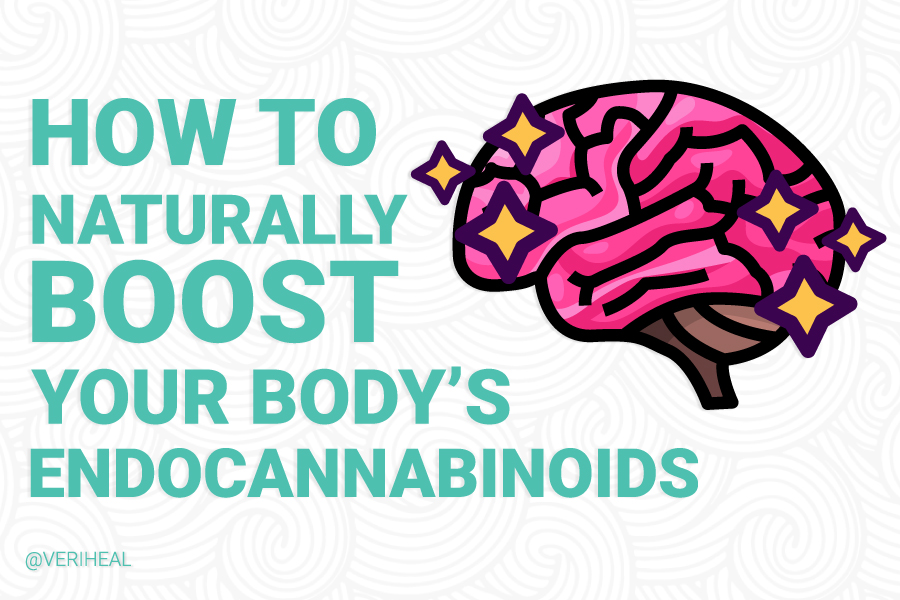The Endocannabinoid System is a fascinating part of our anatomy. As laws surrounding cannabis are being reformed globally, consumers, patients, and medical professionals alike are learning more about this vital biological system as well as how we can nourish it. Let’s take a closer look at what the endocannabinoid system is, how endocannabinoids play a crucial role in its health as well as ways that you can naturally increase the production of endocannabinoids within your body.
The Endocannabinoid System -A Brief Overview of The ECS
The Endocannabinoid System, or ECS, is a biological system found within the anatomy of every known mammal. This system is believed to play a vital role in many natural processes throughout our bodies. The ECS is made up of three primary parts. These include cannabinoid receptors, metabolic enzymes, and endocannabinoids.
Each of these aspects plays a vital part in the overall functions of the ECS. The cannabinoid receptors which are found on the surface of cells are activated by tiny molecules known as cannabinoids. Cannabinoids come in two varieties. Endocannabinoids are produced by the body naturally and phytocannabinoids such as THC and CBD are found within various species of cannabis. After cannabinoids activate receptors within the ECS they are broken down by metabolic enzymes.
In this article, we will be looking at ways that we can naturally increase the production of endocannabinoids within our body to nourish our ECS better and provide it with what it needs to help maintain homeostasis throughout our body. With that in mind, let’s take a closer look at endocannabinoids and the role they play in our health.
What Are Endocannabinoids?
Endocannabinoids are small molecules responsible for activating cannabinoid receptors throughout the ECS. These fat-like molecules within cell membranes are synthesized on-demand, meaning that they are made and utilized by the body as needed rather than made, packaged, and stored for later use like many other biological molecules. Endocannabinoids come in two main categories. The two major endocannabinoids currently known are Anandamide and 2-AG.
Anandamide
Anandamide is commonly referred to as the “Bliss Molecule” as it’s named is derived from the Sanskrit word Ananda which translates to bliss, delight, or joy. This endocannabinoid was named and identified in 1992. It is believed that it plays a vital role in early-stage embryo development and has a significant impact on working memory. This fatty acid neurotransmitter is intriguing to scientists and has been the center of various scientific studies looking to determine its benefits and effects on the human anatomy.
Why You Should Get Your Medical Marijuana Card
Veriheal has satisfied millions of patients nationwide by giving them access to these benefits
- Larger purchase limits
- Peace of mind
- Enhanced legal protection
- Access to higher potency strains
- Save up to 25% on cannabis purchases
- Skip the line at the dispensary
2-AG
2-AG or 2-ArachidonoylGlycerol, as it is scientifically known, was first discovered in the mid-90s. While it was found before this, it was at this time that Dr. Raphael Mechoulam and Shimon Ben-Shabot, his student, discovered that it had an affinity for cannabinoid receptors. This endocannabinoid has been found and identified in human breast milk as well as maternal bovine and is located at high levels within the central nervous system.
Ensuring that our body is producing endocannabinoids sufficiently is an excellent way for us to support the overall health and well-being of our Endocannabinoid System. For this reason, many individuals are looking for ways to increase the production of endocannabinoids naturally, and luckily there are many ways in which you can do this with ease.
Foods That Boost Endocannabinoid Production
One of the easiest ways to produce more endocannabinoids within your ECS is by consuming foods that are known to boost their production. A diet that is high in essential fatty acids, such as omega-3 and omega-6 fatty acids, enhances the activity of the ECS. In fact, endocannabinoids themselves are produced from arachidonic acid, which is an omega-6 fatty acid. Some sources of endocannabinoid-enhancing fatty acids include walnuts, chia seeds, anchovies, sardines, pasture-fed eggs, hemp seeds, flax seeds, and flax oil.
Many people are excited to find out that chocolate or cocoa powder contains several compounds that can help inhibit the breakdown of your body’s endocannabinoids, thus equaling higher endocannabinoid levels within the body. If you’re looking to utilize chocolate to enhance cannabinoid production, it is advisable to look for at least 70% dark chocolate or fancy the idea of adding raw cocoa nibs to various beverages or foods.
To encourage your body to produce endocannabinoids, it is advised to eat organic foods and to avoid plastic such as that widely utilized in food storage. This is because they contain phthalates which are known to block cannabinoid receptors as well as disrupt the body’s natural hormonal system. It is also advisable to limit your intake of alcohol as it can impair the endocannabinoid system and prevent it from producing a sufficient number of endocannabinoids.
The Wim Hof Method
Another way that is currently being explored to increase endocannabinoid production within the body is known as the Wim Hof Method. Wim Hof Method or WHM is a wellness practice that includes breathing exercises that are specifically concentrated and immediately followed by exposure to drastically cold temperatures. According to studies surrounding the Wim Hof Method, It is believed that it may mediate the release of indigenous opioids and cannabinoids in both the periphery and the CNS, leading to a feeling of euphoria as well as decreased anxiety and provide an overall better sense of well-being. This is believed to further promote mindful states augmenting the analgesic effects of endocannabinoids according to a statement by Dr. Otto Muzik one of the authors of said study. To learn more about this study as well as the Wim Hof Method, check out this in-depth article here.
Author, Share & Comments















